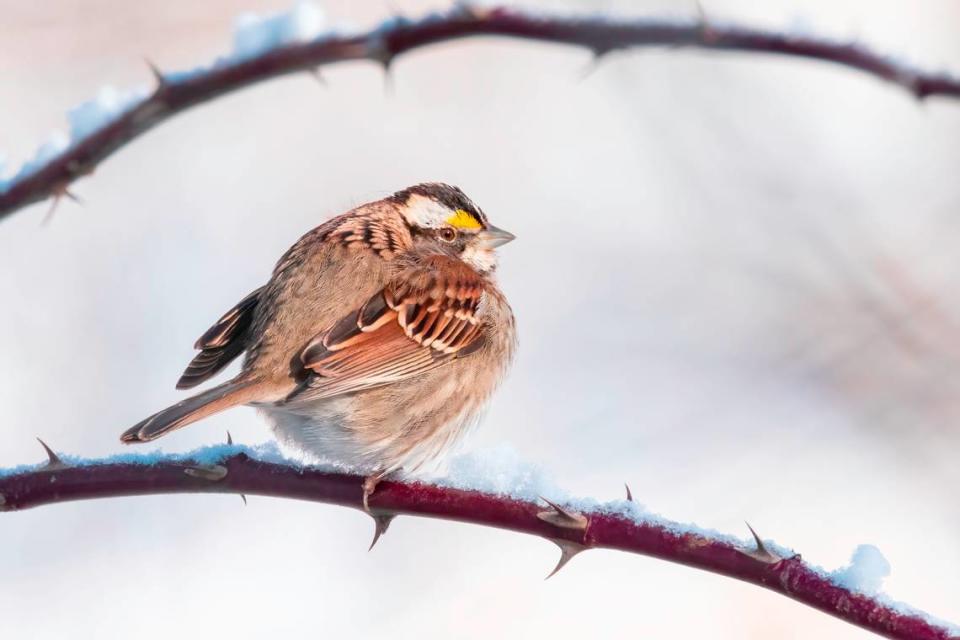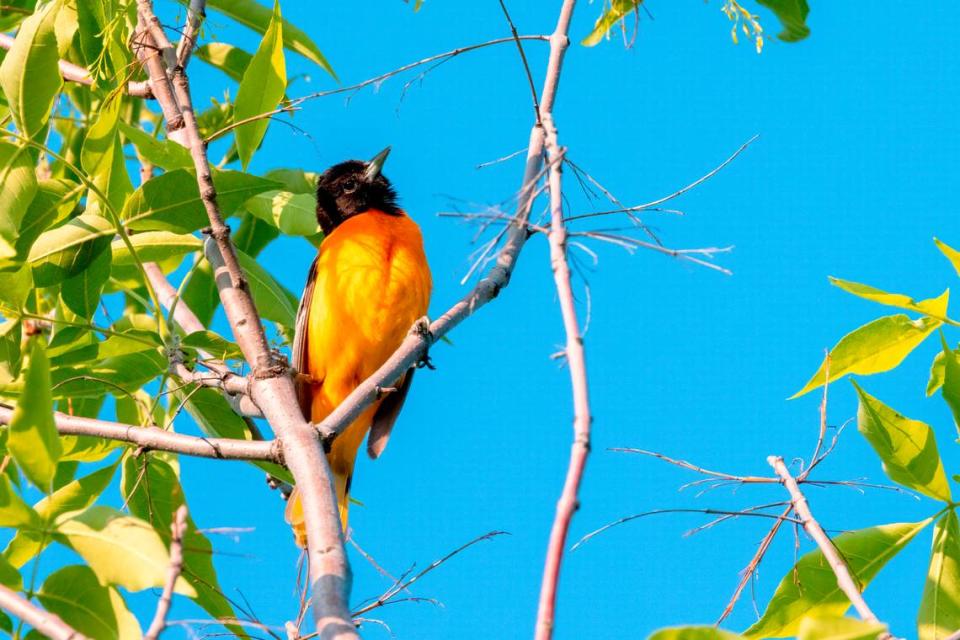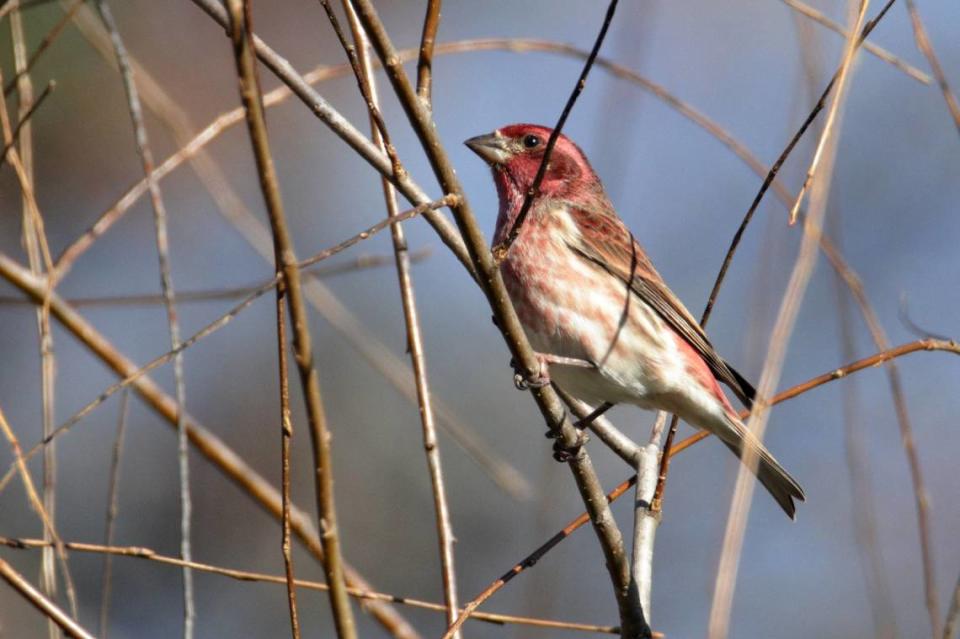Here are the colorful birds — including orioles — migrating to NC this fall and winter
Fall migration has begun, bringing cool-weather birds into our region.
Newly arriving birds starting in October have been “a colorful bunch,” the NC Audubon Society says, as sport birdwatchers and backyard watchers are preparing to see some familiar feathers this fall.
Here’s what to know about arriving birds and how we can best take care of them in our backyards and around the Triangle.
Which birds will migrate into the Raleigh area this fall?
Some of the “colorful” birds the NC Audubon Society mentioned include the:
Swamp Sparrow
White-throated Sparrow
Dark-eyed Junco
White-crowned Sparrow

BirdCast’s Migration Dashboard says the following birds are also likely to arrive this region at this time of year:
Ruby-crowned Kinglet
Yellow-rumped Warbler
Hermit Thrush
Savannah Sparrow
For a fuller list of migratory birds coming into your county this fall, visit ebird.org/GuideMe?cmd=changeLocation and filter to your county and select the month you wish to see.

Which migrating birds can we see in our backyards in NC this fall/winter?
Finches, siskins and orioles sometimes grace our area.
But migration isn’t foolproof, so some common backyard birds “sometimes show up depending on a lot of factors,” said Mel Green, a longtime Triangle birder and member of NC’s New Hope Audubon Society.
Some websites track forecasts and the likelihood of seeing some familiar birds in your area this fall. “Finch Forecast,” for example, predicts which northern finch species might travel south for winter. You can check it out at finchnetwork.org.
This winter, Pine Siskins and Purple Finches are expected in our region. Here’s how you can identify some of these birds:
• Pine Siskins: The adult male is a small, brown-streaked finch with some yellow in the wing and tail. It has a sharply pointed bill, short tail with a notch (like a snake’s tongue) and long wings. It often visits feeders in areas with conifers, or cone-producing trees such as pines. Its call is a distinctive rising buzz, sounding like a zipper getting zipped up, eBird says.
Pine Siskins typically move into Wake County in October, according to eBird’s observation dashboard.
• Purple Finches: These birds are feeder friendly. Males have vibrant raspberry red hues, opaquely red at their crown that dissipates to a solid white color at their feet. Females and young males lack red coloring, looking white with brown streaks with a stark white eyebrow, eBird says.
Purple Finches typically join us in Wake County for the winter in late October or early November.

How to attract birds to your backyard this fall/winter
All About Birds, a rich database of bird knowledge run by The Cornell Lab of Ornithology, offers backyard tips for attracting these birds.
Here’s what you can do you try and see their brilliant reds and vibrant oranges:
• Pine Siskins: These birds flock to thistle or nyjer feeders and other small seeds such as millet or hulled sunflower seeds. They may hang around whole sunflower seed feeders if heavier-billed birds are messy eaters and drop seed bits. If your yard has plants or weeds with hardy seed heads, such as dandelion, Pine Siskins may feed there as well. They will occasionally eat suet, All About Birds says.
• Purple Finches: These birds have large, seed-cracking beaks, and they seem to like black oil sunflower seeds best. A seed preference study determined that they choose thinner sunflower seeds over wider ones. Coniferous trees in your backyard may encourage Purple Finches to visit, All About Birds says.
The Cornell Lab’s Project FeederWatch offers tips on food and feeder types for common feeder birds, all of which these birds are. Learn more about common backyard birds at feederwatch.org and how you can bring them closer to your home.
Do hummingbirds come to Raleigh backyards in the fall/winter?
They can!
“Lots of folks keep their nectar feeders up over the winter to try and encourage some of the occasional winter hummers,” Green said.
Rufous Hummingbirds and Black-chinned Hummingbirds have been known to visit the occasional Raleigh feeder in the chilly months.
Here’s how you can identify those two teeny birds:
• Rufous Hummingbirds: Adult males are almost entirely orange with a white chest and green on their backs. The throat can be iridescent, ranging anywhere from red to lime green depending on the light. Females and young males have orange on their heads and tails.
• Black-chinned Hummingbirds: Adult males have distinct purple and black throats. These birds tend to pump their tails more than other hummingbirds. They also readily come to sugar water feeders and flower gardens.
(Source: ebird.org/species/bkchum and ebird.org/species/rufhum)
Would you believe flamingos have come to NC?
Quite a few “cool and exciting” birds have flocked to North Carolina during this year’s fall migration season, Green said.
Birders widely agree that one of the most exciting birds to grace our state this fall is the American Flamingo.
“Hurricane Idalia picked them up and carried them all over the states, including at least 16 in the Outer Banks. They’re still there now, but they’re out in the Pamlico Sound, and you can only see them from quite a distance.”
An NC bird has been declared extinct. Here’s where it was in the state
TikTok loves this NC pumpkin patch. It has goats and it’s in the Triangle

